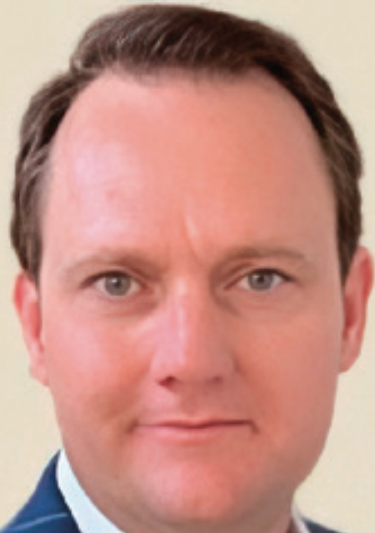Pediatric guided growth and development
Patrick Kircher, pediatric and airway specialist and founder of Nexus Dental Systems, explains how pediatric dentists’ attention to airway issues can prevent misdiagnosis of ADD/ADHD.

Patrick Kircher, pediatric and airway specialist and founder of Nexus Dental Systems, takes an airway-centric approach to behaviors that can be misdiagnosed as ADD/ADHA
In recent years, there has been a growing understanding of the intricate relationship between airway health and overall development in pediatric patients. Dentists who are already involved in airway treatment are well-aware of the significant impact of proper growth and development on children’s long-term health and well-being. This article aims to shed light on the negative impacts of retractive nature of traditional orthodontics while emphasizing the benefits of early intervention, guides, and myofunctional therapy in promoting airway-centric development and preventing misdiagnosed cases of ADD/ADHD. We will explore the importance of adopting a holistic approach to pediatric care.
The airway-centric approach to pediatric development
The airway plays a crucial role in a child’s overall health and development. Proper nasal breathing, sufficient oxygenation, and appropriate tongue posture are all essential for the normal growth of the face, jaws, and airway. Unfortunately, factors such as allergies, enlarged tonsils and adenoids, or structural abnormalities can compromise the airway, leading to mouth breathing and a cascade of adverse effects.
Negative impacts of retractive orthodontics without extractions
Retractive orthodontics, a common approach in traditional orthodontics, involves retracting the anterior teeth to correct malocclusion without extracting any teeth. While this approach may yield immediate esthetic improvements, it often fails to address the underlying causes of malocclusion, including airway issues. Studies have shown that retractive orthodontics can lead to narrowing of the upper arch, restricted nasal airflow, and compromised facial esthetics.
Furthermore, the consequences of retractive orthodontics extend beyond esthetics. These treatments can contribute to the development of a retrusive mandible, leading to a compromised airway and potential breathing difficulties. Additionally, they can exacerbate or create temporomandibular joint (TMJ) issues, facial pain, and sleep-disordered breathing in susceptible individuals.
By identifying and addressing airway issues at an early stage, dentists can help prevent the need for more invasive treatments later in life.”
Misdiagnosed ADD/ADHD: the impact of airway issues
A growing body of research suggests that airway issues can be misdiagnosed as Attention Deficit Disorder (ADD) or Attention Deficit Hyperactivity Disorder (ADHD) due to overlapping symptoms. Children with compromised airways often exhibit behavioral problems, poor attention span, hyperactivity, and difficulty concentrating, which are also characteristic of ADD/ADHD.
Statistics on misdiagnosis
According to a study published in the journal Sleep, up to 9 out of 10 children diagnosed with ADD/ADHD may have undiagnosed sleep-disordered breathing, often stemming from airway issues. The study further suggests that children with sleep-disordered breathing are 40%-100% more likely to exhibit symptoms similar to ADD/ADHD. These statistics highlight the importance of considering airway health in the evaluation of behavioral issues, ensuring an accurate diagnosis and appropriate treatment.
Benefits of early intervention and guides
Early intervention is key to promoting optimal growth and development in children. By identifying and addressing airway issues at an early stage, dentists can help prevent the need for more invasive treatments later in life. Utilizing guides or functional appliances can guide the growth of the jaws and improve airway dimensions. Such interventions focus on encouraging proper nasal breathing, maintaining tongue posture, and enhancing facial development. Through this approach, children can achieve balanced facial esthetics, improved airway function, and reduced risks of sleep-disordered breathing.
The role of myofunctional therapy
Myofunctional therapy is a valuable adjunct to early intervention and guides in promoting proper oral function and myofacial balance. It involves exercises and techniques designed to encourage proper tongue posture and swallowing.
Collaboration between dentists and myofunctional therapists
Collaboration between dentists and myofunctional therapists is crucial for comprehensive care and optimal patient outcomes. Dentists who are already engaged in airway treatment can work closely with myofunctional therapists to develop integrated treatment plans. This collaboration allows for the identification and simultaneous treatment of airway-related issues, malocclusions, and orofacial muscle dysfunctions.
Together, dentists and myofunctional therapists can provide patients with a comprehensive approach that includes orthodontic interventions, expansion appliances, myofunctional exercises, and other appropriate therapies. This collaboration enhances the effectiveness of treatment, leading to improved airway function, craniofacial development, and overall oral health in pediatric patients.
 Patrick Kircher founded National Dental Systems (NDS) in 2015 comprising a comprehensive medically necessary dental model including the diagnosis and treatment of Obstructive Sleep Apnea, DMSD, and associated symptoms. National Dental Systems acquired DreamSleep and TruDenta complementing what DreamSleep had in place with the ACSDD, medical reimbursement, and technology. Under his guidance, NDS experienced 100+% year-over-year growth and yielded 60% net margin leading to a highly profitable and scalable business. In 2020, NDS merged with Nexus Dental Systems to collaborate with industry leaders and provide more impactful services and solutions for the industry.
Patrick Kircher founded National Dental Systems (NDS) in 2015 comprising a comprehensive medically necessary dental model including the diagnosis and treatment of Obstructive Sleep Apnea, DMSD, and associated symptoms. National Dental Systems acquired DreamSleep and TruDenta complementing what DreamSleep had in place with the ACSDD, medical reimbursement, and technology. Under his guidance, NDS experienced 100+% year-over-year growth and yielded 60% net margin leading to a highly profitable and scalable business. In 2020, NDS merged with Nexus Dental Systems to collaborate with industry leaders and provide more impactful services and solutions for the industry.
To start recognizing sleep-related breathing disorders and avoid misdiagnosis of ADD/ADHD, try the problem-solving tool known as the five-fingered approach, described by Dr. David McCarthy here: https://pediatricdentalpractice.com/the-five-finger-approach-to-sleep-wake-complaints/
